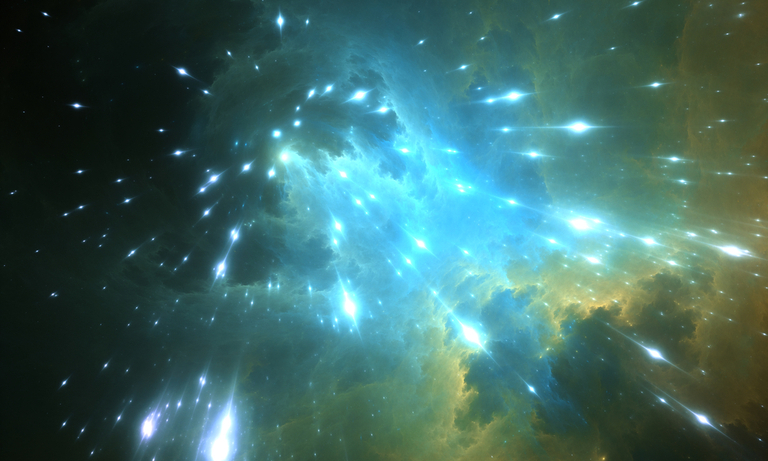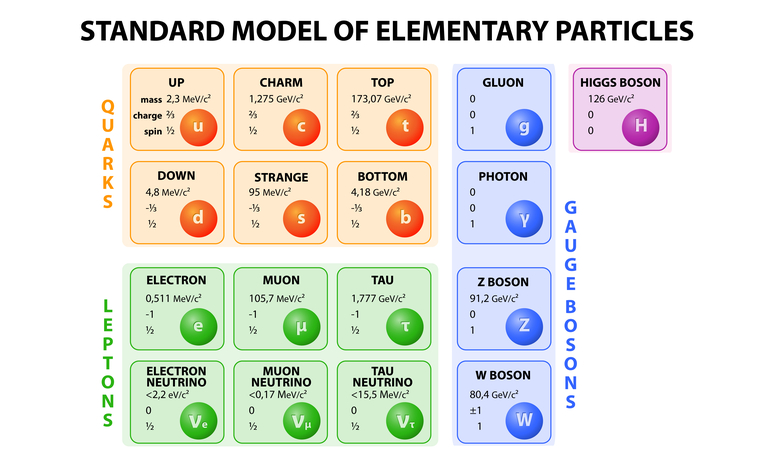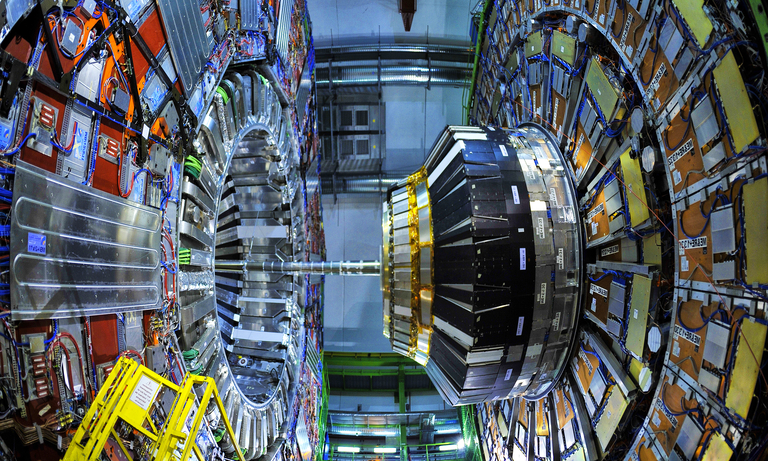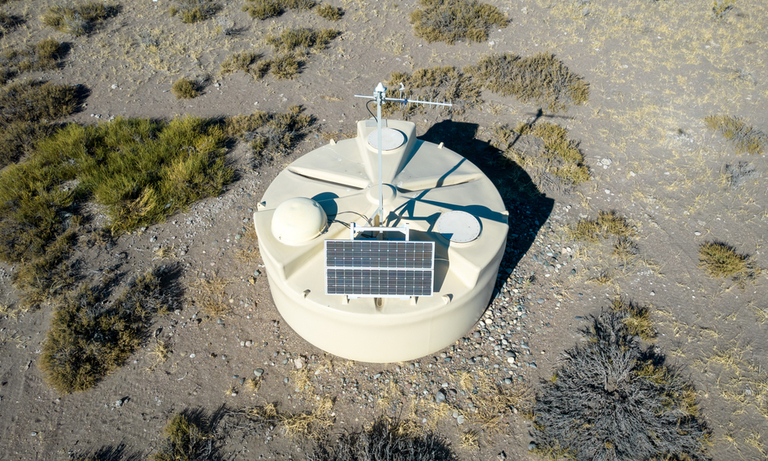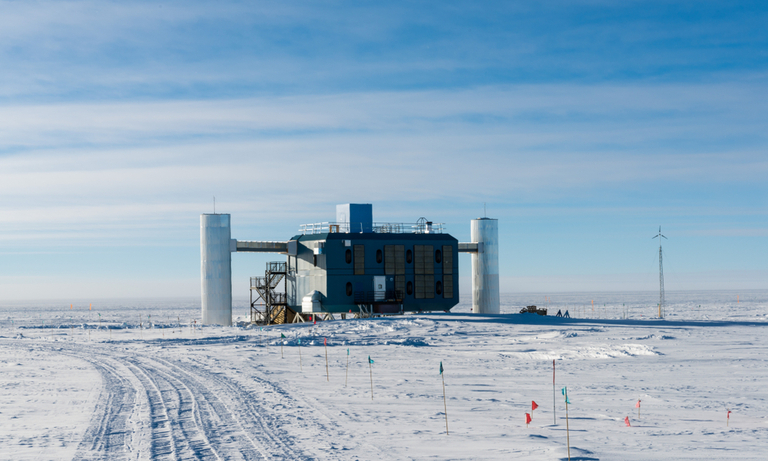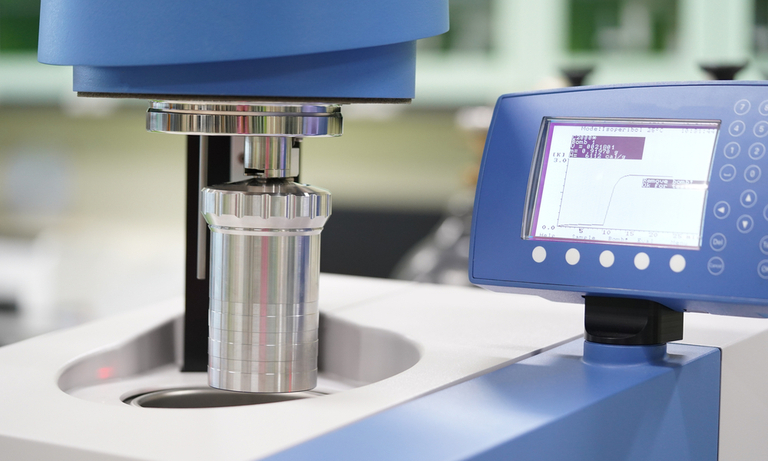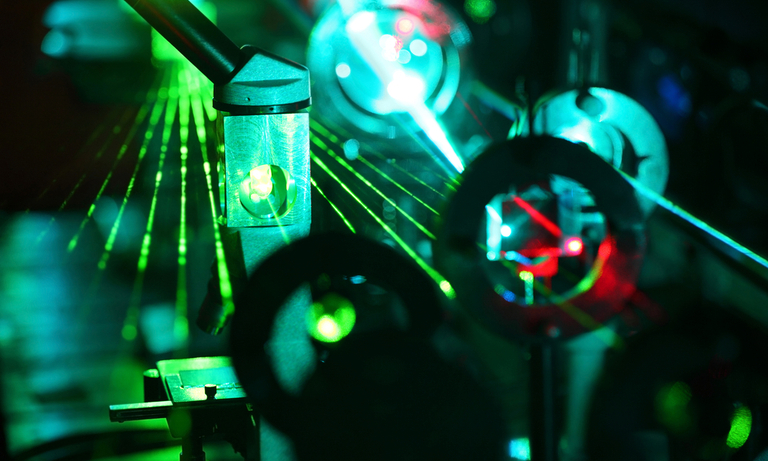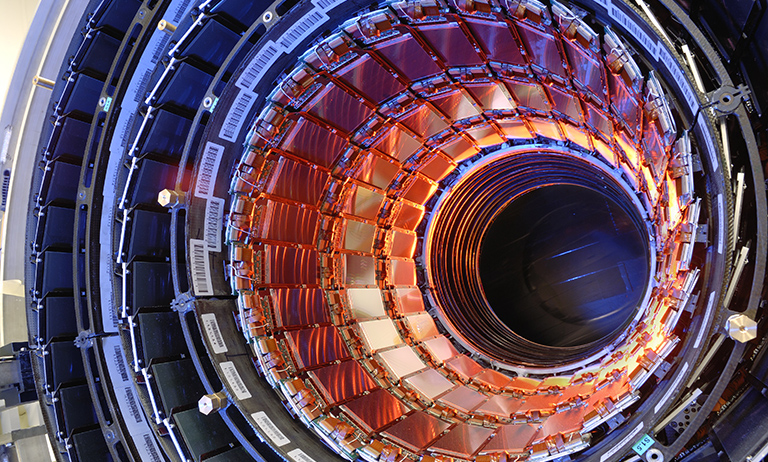Home
Products
Physics Research Field
Type of Experiment
Detector Type
Behind the Science
Tech in a Nutshell
United Kingdom (EN)
Select your region or country.


Large area ground observation site
Cosmic rays are charged particles or photons coming from outer space. Their energy spans over fourteen orders of magnitude, from the MeV range to at least 1020 eV. The cosmic ray flux decreases from more than 103 particles per second per m2 at GeV energies, to about one particle per m2 per year at a PeV, and further to less than one particle per km2 and per century above 100 EeV.
Therefore, at low energies, up to 1014 eV, where the flux is strong, cosmic rays can be detected in a direct way, using detectors placed on air balloons and satellites which work out of the Earth’s atmosphere, but at higher energies, they can be only studied indirectly. The Extensive Air Showers (EAS), produced by the interaction of primary cosmic rays with the atmosphere, are detected by large observation sites on the surface. Information about the primary cosmic ray must be reconstructed, starting from the features of the shower measured at the ground.
The EAS longitudinal profile is studied with Cherenkov or Fluorescence detectors; the lateral distribution with ground arrays of detectors, which are usually scintillators, RPCs or water Cherenkov stations.
The Pierre Auger Observatory was designed to study cosmic rays with energies above 1017 eV (UHECR – Ultra High Energy Cosmic Rays).
It is located in the Argentinian pampa, near the town of Malargüe in the province of Mendoza, at an altitude of about 1400 m above sea level. And is composed by a surface detector array (SD) of 1660 water-Cherenkov stations spread over an area of 3000 km2 and overlooked by 27 fluorescence telescopes (FD).)
A surface detector station consists of a polyethylene tank with a base area of 10 m2 containing 12 m3 of ultra-pure water. The Cherenkov light produced by the charged particles which cross the water is collected by three 9” diameter photomultiplier tubes (PMTs).
The collected signal pulses have different size and the sum of the signal over time is related to the energy deposited by the particle in the detector.
Thanks to the size of the signal and its arrival time in the stations, it is possible to reconstruct the energy and the arrival direction of the shower. The signal in the station is dominated by the electromagnetic and muonic components of the shower. The third component, the hadronic component, is absorbed in the Earth’s atmosphere. The muonic component, which cannot be directly measured by the SD stations but only evaluated using different techniques, is a very powerful variable to study the mass composition of UHECR.
The content of this component in the shower is related to the first hadronic interactions of the primary cosmic ray with the atmosphere. At the energies of interest for the Pierre Auger Observatory, the hadronic cross sections are not well known: they are extrapolated by the cross sections measured at the LHC, the most powerful accelerator in the world, at lower energies.
Therefore, the estimation of the muonic component is strongly dependent on the several hadronic interaction models coming from the extrapolation of the hadronic cross sections. The number of muons obtained by the Auger data with all methods is always larger that the one expected from simulations produced with any hadronic models. It is very important to measure the muonic component to constrain hadronic models and to have a reliable variable to study mass composition with high statistics.
The Xmax (depth of the maximum of the shower longitudinal profile) measured by the FD is another powerful variable for the mass composition, but the duty cycle of the FD, that can operate only during clear moon-lights nights, is ~15%, while the SD duty cycle is 100%.
The Pierre Auger Collaboration has planned an upgrade of the surface detector, AugerPrime, whose main goal is to discriminate between the muonic and the electromagnetic component.
The main part of the upgrade is the Surface Scintillator Detector (SSD), which consists of a ~4 m2 plastic scintillator detector which will be mounted on top of every SD station.
The SSD is more sensitive to the electromagnetic component, while the Water Cherenkov Detector (WCD) signal is dominated by the muonic component. The combination of these two measurements with different sensitivity will provide the number of muons for each shower. Each SSD consists of two scintillator sub-modules, each composed of extruded polystyrene scintillator bars of about 1.6 m length, 5 cm width and 1 cm thickness.
The scintillator light will be read out with wavelength-shifting fibres that are inserted into straight extruded holes in the scintillator planes, and then bundled and attached to a single photomultiplier tube.
For a shower at 1020 eV and a zenith angle of 38 degrees, the peak signal in a 4 m2 SSD at 200m from the shower core (the point of impact at ground of the shower axis, which represents the direction of the primary cosmic ray at the ground – the density of particles at the ground has its maximum near the core) is expected to be around 12,000 MIP (Minimum Ionizing Particles).
A maximum signal of 12,000 MIP for a UHECR, is therefore a reasonable upper bound for determining the dynamic range. It is necessary a PMT that is linear enough to cover the whole range.
The PMT that will be chosen for the upgrade requires high quantum efficiency at the wavelength of the scintillating light, as well as an excellent linearity range of peak anode current with good gain.
The Pierre Auger Collaboration has planned an upgrade of the surface detector, AugerPrime, whose main goal is to discriminate between the muonic and the electromagnetic component. The main part of the upgrade is the Surface Scintillator Detector (SSD), which consists of a ~4 m2 plastic scintillator detector which will be mounted on top of every SD station. The SSD is more sensitive to the electromagnetic component, while the Water Cherenkov Detector (WCD) signal is dominated by the muonic component. The combination of these two measurements with different sensitivity will provide the number of muons for each shower. Each SSD consists of two scintillator sub-modules, each composed of extruded polystyrene scintillator bars of about 1.6 m length, 5 cm width and 1 cm thickness. The scintillator light will be read out with wavelength-shifting fibres that are inserted into straight extruded holes in the scintillator planes, and then bundled and attached to a single photomultiplier tube.
Moreover, a fourth PMT with a small cathode surface will be added to the WCD to extend its dynamic range. It is important to have fewer saturated stations to reduce the uncertainty in the reconstruction of the shower.
The Small PMT (the standard PMTs are called Large PMT having a collecting area with a diameter of 230 mm) will need an excellent linearity range with good operative gain.
After the first measurements are taken with a small number of upgraded acquisition stations, the plan is that AugerPrime will be further validated and the final design details will be defined.
- Confirmation
-
It looks like you're in the . If this is not your location, please select the correct region or country below.
You're headed to Hamamatsu Photonics website for GB (English). If you want to view an other country's site, the optimized information will be provided by selecting options below.
In order to use this website comfortably, we use cookies. For cookie details please see our cookie policy.
- Cookie Policy
-
This website or its third-party tools use cookies, which are necessary to its functioning and required to achieve the purposes illustrated in this cookie policy. By closing the cookie warning banner, scrolling the page, clicking a link or continuing to browse otherwise, you agree to the use of cookies.
Hamamatsu uses cookies in order to enhance your experience on our website and ensure that our website functions.
You can visit this page at any time to learn more about cookies, get the most up to date information on how we use cookies and manage your cookie settings. We will not use cookies for any purpose other than the ones stated, but please note that we reserve the right to update our cookies.
1. What are cookies?
For modern websites to work according to visitor’s expectations, they need to collect certain basic information about visitors. To do this, a site will create small text files which are placed on visitor’s devices (computer or mobile) - these files are known as cookies when you access a website. Cookies are used in order to make websites function and work efficiently. Cookies are uniquely assigned to each visitor and can only be read by a web server in the domain that issued the cookie to the visitor. Cookies cannot be used to run programs or deliver viruses to a visitor’s device.
Cookies do various jobs which make the visitor’s experience of the internet much smoother and more interactive. For instance, cookies are used to remember the visitor’s preferences on sites they visit often, to remember language preference and to help navigate between pages more efficiently. Much, though not all, of the data collected is anonymous, though some of it is designed to detect browsing patterns and approximate geographical location to improve the visitor experience.
Certain type of cookies may require the data subject’s consent before storing them on the computer.
2. What are the different types of cookies?
This website uses two types of cookies:
- First party cookies. For our website, the first party cookies are controlled and maintained by Hamamatsu. No other parties have access to these cookies.
- Third party cookies. These cookies are implemented by organizations outside Hamamatsu. We do not have access to the data in these cookies, but we use these cookies to improve the overall website experience.
3. How do we use cookies?
This website uses cookies for following purposes:
- Certain cookies are necessary for our website to function. These are strictly necessary cookies and are required to enable website access, support navigation or provide relevant content. These cookies direct you to the correct region or country, and support security and ecommerce. Strictly necessary cookies also enforce your privacy preferences. Without these strictly necessary cookies, much of our website will not function.
- Analytics cookies are used to track website usage. This data enables us to improve our website usability, performance and website administration. In our analytics cookies, we do not store any personal identifying information.
- Functionality cookies. These are used to recognize you when you return to our website. This enables us to personalize our content for you, greet you by name and remember your preferences (for example, your choice of language or region).
- These cookies record your visit to our website, the pages you have visited and the links you have followed. We will use this information to make our website and the advertising displayed on it more relevant to your interests. We may also share this information with third parties for this purpose.
Cookies help us help you. Through the use of cookies, we learn what is important to our visitors and we develop and enhance website content and functionality to support your experience. Much of our website can be accessed if cookies are disabled, however certain website functions may not work. And, we believe your current and future visits will be enhanced if cookies are enabled.
4. Which cookies do we use?
There are two ways to manage cookie preferences.
- You can set your cookie preferences on your device or in your browser.
- You can set your cookie preferences at the website level.
If you don’t want to receive cookies, you can modify your browser so that it notifies you when cookies are sent to it or you can refuse cookies altogether. You can also delete cookies that have already been set.
If you wish to restrict or block web browser cookies which are set on your device then you can do this through your browser settings; the Help function within your browser should tell you how. Alternatively, you may wish to visit www.aboutcookies.org, which contains comprehensive information on how to do this on a wide variety of desktop browsers.
5. What are Internet tags and how do we use them with cookies?
Occasionally, we may use internet tags (also known as action tags, single-pixel GIFs, clear GIFs, invisible GIFs and 1-by-1 GIFs) at this site and may deploy these tags/cookies through a third-party advertising partner or a web analytical service partner which may be located and store the respective information (including your IP-address) in a foreign country. These tags/cookies are placed on both online advertisements that bring users to this site and on different pages of this site. We use this technology to measure the visitors' responses to our sites and the effectiveness of our advertising campaigns (including how many times a page is opened and which information is consulted) as well as to evaluate your use of this website. The third-party partner or the web analytical service partner may be able to collect data about visitors to our and other sites because of these internet tags/cookies, may compose reports regarding the website’s activity for us and may provide further services which are related to the use of the website and the internet. They may provide such information to other parties if there is a legal requirement that they do so, or if they hire the other parties to process information on their behalf.
If you would like more information about web tags and cookies associated with on-line advertising or to opt-out of third-party collection of this information, please visit the Network Advertising Initiative website http://www.networkadvertising.org.
6. Analytics and Advertisement Cookies
We use third-party cookies (such as Google Analytics) to track visitors on our website, to get reports about how visitors use the website and to inform, optimize and serve ads based on someone's past visits to our website.
You may opt-out of Google Analytics cookies by the websites provided by Google:
https://tools.google.com/dlpage/gaoptout?hl=en
As provided in this Privacy Policy (Article 5), you can learn more about opt-out cookies by the website provided by Network Advertising Initiative:
http://www.networkadvertising.org
We inform you that in such case you will not be able to wholly use all functions of our website.
Close


